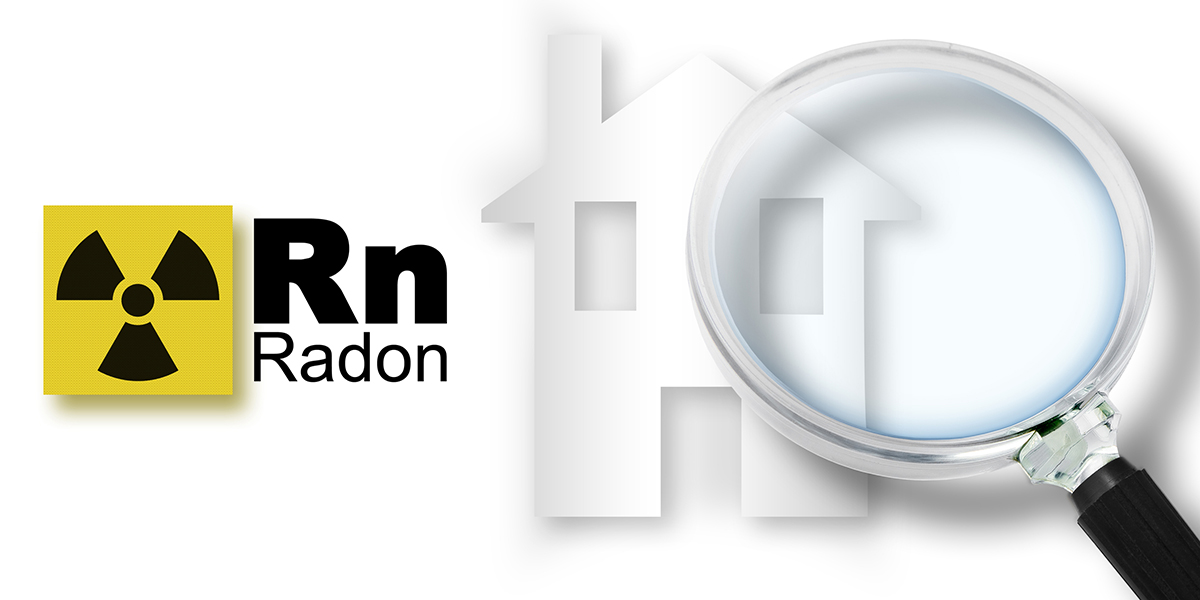Annual Dose Contributions of Typical Indoor Radon Levels (Part 2)

The duty to protect all Canadian workers, regardless of their workplace
In “Annual Dose Contributions of Typical Indoor Radon Levels (Part 1),” we explored the contribution of radon gas to annual effective dose for three hypothetical Canadians living with different indoor radon levels.
Our three examples included indoor radon levels of 100, 200, and 557 Bq/m3. Our calculations found that, given the increased amount of time currently spent at home (an estimated 22 hours per day), inhaled radiation from radon resulted in annual effective doses of 2.67, 5.35, and 14.9 mSv/year, respectively.
Table 1: Estimated annual effective dose for three hypothetical Canadians
| Indoor radon levels (Bq/m3) |
Annual effective dose (mSv/year) |
|
| Person A | 100 | 2.67 |
| Person B | 200 | 5.35 |
| Person C | 557 | 14.9 |
These doses well exceed the current estimate of 0.9 mSv/year for the average Canadian. This was true even for Canadians living below the Canadian guideline level of 200 Bq/m3. Further, the overall effective dose from radon at indoor concentrations of 200 Bq/m3 or above was much higher than current estimates of background radiation levels of 1.8 mSv/year.
While these results may be eye-opening, the measurement and mitigation of radon in Canadian homes remains the responsibility of homeowners themselves. It is the choice of each homeowner whether to test their residence for radon, and whether to mitigate. In part 2 of this article, however, we move our focus to workplaces.
When a home becomes a workplace, which guidelines apply?
The COVID-19 pandemic turned homes into workplaces for almost one in three Canadian workers, and with the pandemic now well into its second year, many employers have expressed their intentions to keep workers working from home until at least the end of 2021. While it is impossible to predict the post-pandemic work landscape, it seems likely that an increased number of Canadians will continue working from home on a permanent basis.
When a home becomes a workplace, which guidelines apply? The Canada Labour Code includes radon level limits and is set to be updated to reflect the most recent Canadian radon guideline level in the spring of 2022. The Canadian Guidelines for the Management of Naturally Occurring Radioactive Materials (NORM) include guidelines for indoor workplaces with respect to radon; however, they have no legal force except in Ontario, where the Ministry of Labour has now adopted a policy of reading the NORM guidelines into Ontario’s Occupational Health and Safety Act.
The NORM guidelines take a simplified approach to estimating the dose from radon. The NORM recommendation is that each workplace be tested to establish the estimated annual average concentration of radon gas, and the NORM program classification then determined by consulting the following table:
Table 2: NORM guidelines
| Average annual concentration (Bq/m3) |
NORM program classification |
| 800 to 3,000 | Radiation protection management |
| 200 to 800 | NORM management program |
| Background to 200 | Unrestricted |
Source: Canadian Guidelines for the Management of Naturally Occurring Radioactive Materials (NORM), Table 4.1: Radon and NORM Program Classifications, page 21.
For workplaces that fall into the NORM management or radiation protection management categories by measuring above 200 Bq/m3, the NORM guidelines recommend taking steps to reduce the radon levels to below 200 Bq/m3. Given our discussion of radon levels in homes across Canada in part 1 of this article and the findings of recent community testing conducted by Take Action on Radon, you can see that many homes in Canada would fall within NORM management levels, while others would require radiation protection management.
Fortunately, there are well-established and highly effective radon mitigation solutions available for all Canadian homes, as well as a national directory of certified radon professionals whom employers and homeowners alike may consult for guidance.
The COVID-19 pandemic has not only changed the working reality of many Canadians, but also highlighted the importance of good indoor air quality. Employers have a duty to protect the health and safety of their employees, and that duty extends to measuring the radon in their workplaces, wherever those workplaces may be.
Has your workplace been tested for radon?
No matter what your workplace looks like, or where it’s located, every workplace needs to be tested! For more information on radon, see Protect Your Workplace from Radon on the CARST website.
Résumé : Contributions de dose annuelle des niveaux typiques de radon à l’intérieur des bâtiments (2e partie)
Dans « Contributions de dose annuelle des niveaux typiques de radon à l’intérieur des bâtiments (1ère partie) », Erin s’est penchée sur la contribution du radon dans la dose efficace annuelle pour trois Canadiens fictifs dans leur foyer. Dans la 2e partie, elle s’est penchée sur l’exposition au radon en milieu de travail.
Pour près d’un travailleur canadien sur trois, le foyer est devenu un lieu de travail en raison de la pandémie de COVID-19. Dans la 2e partie, Erin se penche sur la responsabilité des employeurs de protéger la santé et la sécurité de leurs employés quand ils travaillent à la maison. Selon elle, cette responsabilité va jusqu’à mesurer le radon dans leur milieu de travail, et ce, peu importe où il se situe.
 Erin Curry
Erin Curry
Erin Curry is a mechanical engineer who previously ran her own building inspection and radon measurement firm. She is currently the regional director of the Canadian Association of Radon Scientists and Technologists (CARST). She also serves as project lead for the Take Action on Radon project. Erin brings a wealth of knowledge and practical experience to support CARST members. Based near Montreal, QC, Erin is the French-speaking contact for all CARST initiatives.
Do you want to read more articles like this?
The Bulletin is published by the Canadian Radiation Protection Association (CRPA). It’s a must-read publication for radiation protection professionals in Canada. The editorial content delivers the insights, information, advice, and valuable solutions that radiation protection professionals need to stay at the forefront of their profession.
Sign up today and we’ll send you an email each time a new edition goes live. In between issues, check back often for updates and new articles.
Don’t miss an issue. Subscribe now!
Subscribe

 Erin Curry
Erin Curry
